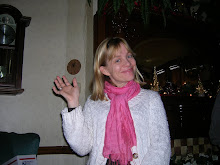A very fanciful news item made the rounds a few weeks ago: the discovery of the first gay caveman. When I saw the story, I figured the headline writers were just being salacious, as such writers are. However, the "gay caveman" was the conclusion of the lead archeologist.
A few weeks later, a similar news item on the discovery of nine skeletons, mostly children, led to the lead: “The screams must have been unbearable.” The story goes onto say, “Dozens, maybe even hundreds, of women, babies and children were strangled, stripped of possessions and tossed into the ditch that encircled the fort.” The writer based the beginning entirely on supposition.
My former city editor used to say, “Never let the facts get in the way of a good story.” He was being sarcastic, of course, and I can only imagine his words—most of them unprintable—if either of these two news stories came across his desk.
The facts, in both cases, comprise of skeletons, and the items the bodies were or weren’t buried with. In the first case, a man from the Corded Ware culture was found buried in a manner previously only seen in graves for females. According to the article, the society, sometimes called the Battle Ax or the Single Grave culture, typically buried people with gender-specific tools—weapons for men, pots and jugs for women.
So what does this mean? Apparently that the man was gay. Lead archeologist Kamila Remisova Vesinova said, “From history and ethnology, we know that people from this period took funeral rites very seriously so it is highly unlikely that this positioning was a mistake. Far more likely is that he was a man with a different sexual orientation, homosexual or transsexual.”
Far more likely? Far more likely that the archeologist either is looking for publicity or she forgot to check her biases at the door. Almost all societies did—and do—take burial rites seriously.
I’m not saying that the man in question wasn’t gay. The fact is, we have no idea who he was, what he was, or why he was buried as a woman. As a novelist, I could spin quite a tale about how he came to be buried in such a manner. But that's the fun part of writing fiction. Nonfiction writers and journalists need to stick to the facts even as they questions them.
In the second story, we have no idea why the three adults, teenager, toddler and four infants ended up in a mass grave minus any possessions. The archeologist in charge believes it could be—could be—possible that more skeletons will be found in the ancient ditch, all victims of intertribal fighting during Britain’s Iron Age. While the theory is solid, “could be” is a long way from unbearable screams and unheeded pleas for mercy.
Am I the only one bothered by such lapses in academic and journalistic objectivity?
























